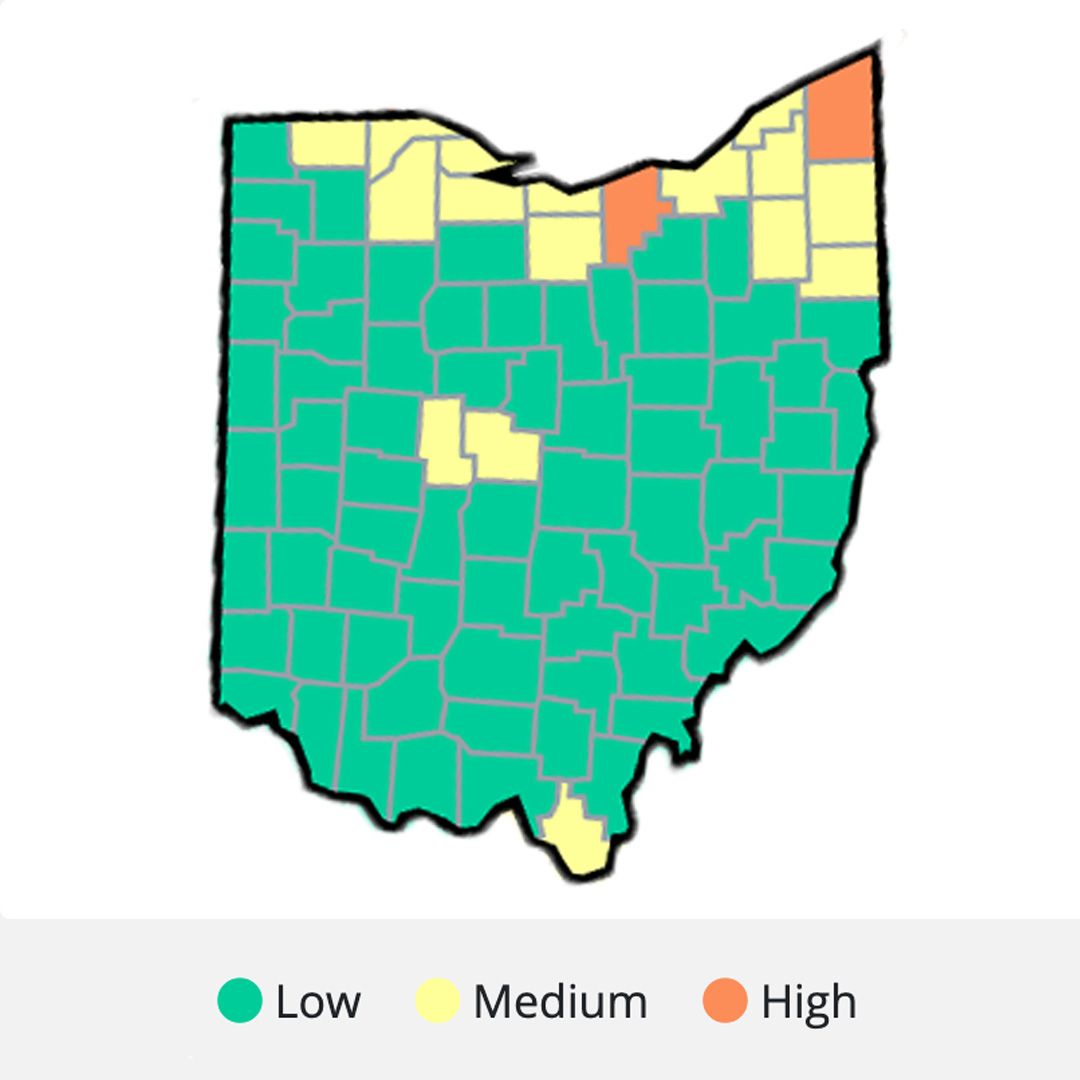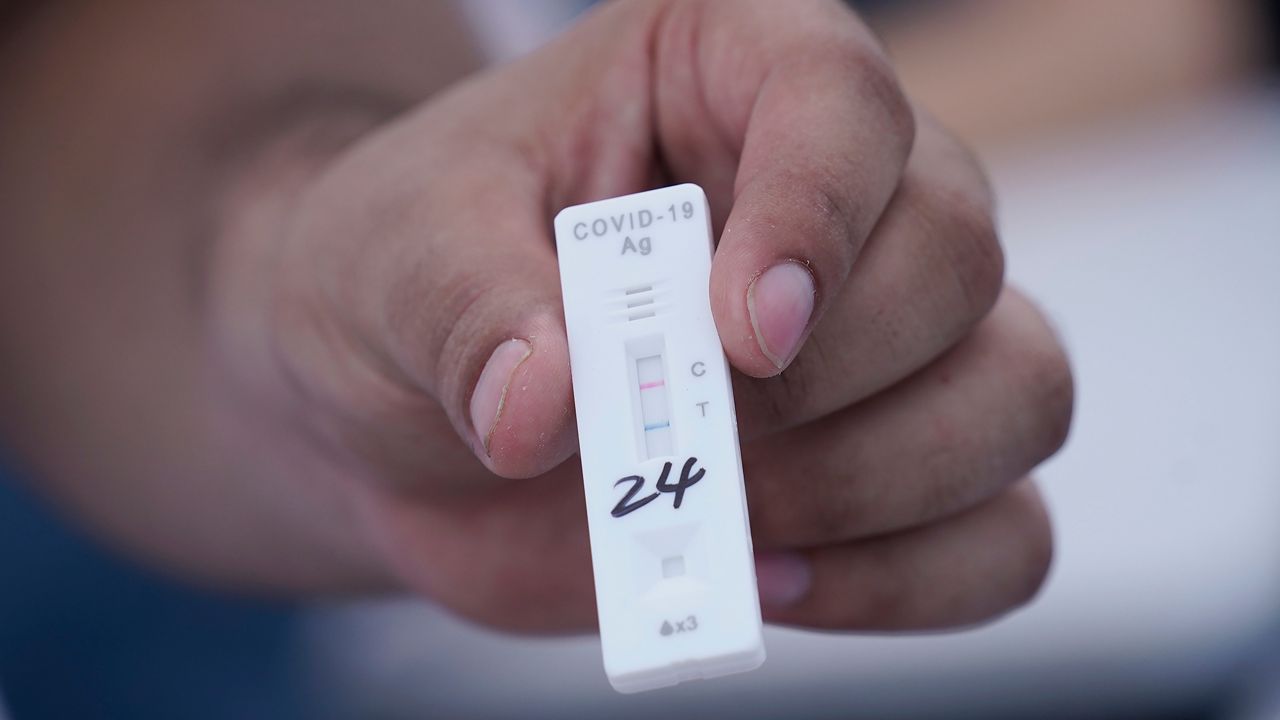COLUMBUS, Ohio — The Centers for Disease Control and Prevention is now reporting medium or high COVID-19 levels in eighteen Ohio counties, an increase from just one county earlier in the week.
What You Need To Know
- In Ohio, 16 counties have medium transmission levels and two are in the high tier
- COVID-19 hospitalizations in Ohio have more than doubled in the last month
- The CDC reports that a newer subvariant of omicron is rising in prevalence
Since March, Ohio’s counties have mostly been in the CDC’s low transmission level, but that is starting to change as more contagious subvariants of omicron spread.
For Lorain and Ashtabula counties, the CDC recommends universal masking indoors because they are in the high transmission level. For the sixteen counties in the medium level, people who are at high risk are advised to consider masking.

Ohio’s case rate this week of 269 is significantly higher than a recent low point in late March of 37, said Chris Cook, assistant health commissioner at the Clark County Combined Health District, during a county board of health meeting Thursday.
“This increase is something that we need to pay attention to, and that's exactly what we’re doing,” Cook said.
The statewide case rate, which is cases per 100,000 residents over the last two weeks, remains much lower than the record in late January of 2,155, he noted.
The case rate in Lucas County, home to Toledo, is the third highest in Ohio.
Toledo Mayor Wade Kapszukiewicz said officials feel it’s still safe at this time to not have masking in place.
“We were the first city to pass an ordinance requiring a mask in 2020,” he said. “We have shown a willingness all along to act in what is the best interest of the health of our community, and we're going to continue to do that… If the numbers change, then our response will change.”
Kapszukiewicz said he is pleased the city recently reached a 70% vaccination rate, and he recognized a grassroots organization that has worked to increase vaccinations in the region, the V Project, with a key to the city on Thursday.
“It's just a classic example of Toledo at its best, when you have citizens, truly self-recruited, self-appointed activists, who didn't wait for an order from some elected official — they just took it upon themselves,” he said.
Officials in Toledo and elsewhere in Ohio continue to emphasize vaccinations and boosters as the best response to the current challenges with COVID-19.
“This isn’t over, we still have work to do,” Kapszukiewicz said. “Especially in the eastern seaboard, and the midwestern part of the country, there does appear to be at least the beginnings of another spike.”
The Ohio Hospital Association reports 650 people with COVID-19 are hospitalized in Ohio, while 87 are receiving care in ICUs.
The CDC’s variant tracker shows a subvariant known as BA.2.12.1 has continued to rise in prevalence, now representing about 47.5% of U.S. cases.
COVID-19 hospitalizations in Ohio have more than doubled in the last month, but some of the current patients are primarily in the hospital for conditions other than COVID-19, state officials said Wednesday.
As far as case rates per 100,000, six of the eight hottest counties in the state are in northeast Ohio, including Cuyahoga and Summit counties.
Central Ohio is also a bit of a hotspot, with Franklin, Delaware and Union counties reporting case rates well above the statewide average. Meanwhile, in southwest Ohio, case rates sit below the average.
Cook said the test positivity rate in Clark County is up to 11%. Wastewater surveillance is also pointing toward COVID-19 being on the rise.
“We have seen a weekly increase in the number of detectable COVID-19 remnants in our wastewater since April 1,” he said. “Over the last month and a half, we've seen this steady increase in our wastewater, an early indicator of cases rising."



